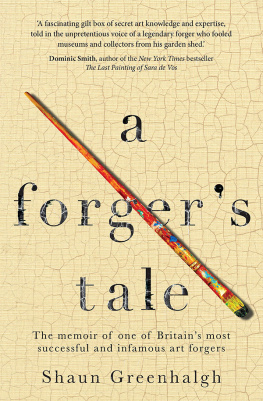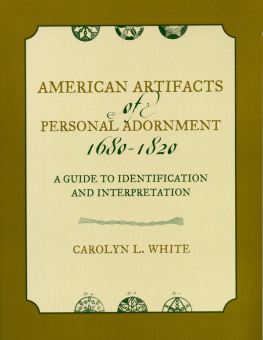First published 2010 by Left Coast Press, Inc.
Published 2016 by Routledge
2 Park Square, Milton Park, Abingdon, Oxon OX14 4RN
711 Third Avenue, New York, NY 10017, USA
Routledge is an imprint of the Taylor & Francis Group, an informa business
Copyright 2010 Taylor & Francis
All rights reserved. No part of this book may be reprinted or reproduced or utilised in any form or by any electronic, mechanical, or other means, now known or hereafter invented, including photocopying and recording, or in any information storage or retrieval system, without permission in writing from the publishers.
Notice:
Product or corporate names may be trademarks or registered trademarks, and are used only for identification and explanation without intent to infringe.
Library of Congress Cataloguing-in-Publication Data
Kelker, Nancy L.
Faking ancient Mesoamerica / Nancy L. Kelker, Karen O. Bruhns.
p. cm.
Includes bibliographical references and index.
ISBN 978-1-59874-150-6 (hardback: alk. paper)
ISBN 978-1-59874-149-0 (pbk.: alk. paper)
1. Indian artForgeriesMexico. 2. Indian artForgeriesCentral America.
3. Forgery of antiquitiesMexico. 4. Forgery of antiquitiesCentral America.
5. Indians of MexicoAntiquities. 6. Indians of Central AmericaAntiquities.
7. Indian artMexico. 8. Indian artCentral America. I. Bruhns, Karen Olsen.
II. Title.
F1219.3.A7K455 2010
972.01dc22
200904664
ISBN 978-1-598-74150-6 hardcover
ISBN 978-1-598-74149-0 paperback
W e would like to tender our deepest thanks to the following people, who aided us with information, pictures, gossip, old references, and other extremely useful things. Not a one of them should bear any blame for the uses to which we have put this information.
Lic. Paul Amaroli, Fundacin Nacional de Arqueologa de El Salvador
Mr. John Ashworth, Middle Tennessee State University
Mr. Michael Baggarly, Middle Tennessee State University
Sra. Julia Barrillas, San Salvador
Ms. Pamela Bonham, University of Kansas
Mr. Arthur Brand
Dr. James Burton, University of Wisconsin, Madison
Dr. Kevin Downs, Middle Tennessee State University
Mr. Howard Ekman
Dr. Virginia Fields, Los Angeles County Museum of Art
Dr. Clayton Harris, Middle Tennessee State University
Dr. Rebecca Gonzlez Lauk, INAH Tabasco
Mr. Carlyle Johnson, Tennessee State University
Dr. Alfred Lutz, Middle Tennessee State University
Dr. Margaret MacLean, U.S. Department of State
Ms. Elayne Marquis
Dr. Virginia Miller, University of Illinois, Chicago Circle
Dra. Mariana Mould de Pease, INPC, Peru
Dr. Oscar White Muscarella, Metropolitan Museum of Art, New York
Mr. Carl Nagin
Dr. Frank Norick
Sr. Jos Panades
Dr. Robert Pickering, Buffalo Bill Historic Center
Dr. Joanne Pillsbury, Director, Pre-Columbian Studies, Dumbarton Oaks
Sr. Pedro Portillo, Santa Tecla
Mr. Mark Rasmussen, Rare Collections, Stillwater, Minnesota
Mr. Rick Rishaw
Dr. Michael Snarskis, CATIE, Costa Rica
Dr. David Stuart, University of Texas, Austin
Mr. Thomas Weller
Mrs. Angela Wilcoxson
Special thanks to Ms. Sher Fick for research and illustrations, and also many thanks to the unnamed hordes who were of great help but did not want to be associated with a work such as ours since tenure and academic freedom most certainly do not exist in the wide world of dubious behavior with antiquities.
We also want to thanks those museums and galleries kind enough to let us use photographs of their iffy pieces: National Museum of the American Indian, Smithsonian Institution, Washington, DC; Museo de Arte Precolombino y Vidrio Moderno, Antigua, Guatemala; National Gallery of Australia, Canberra; the Royal Ontario Museum, Toronto; The British Museum, London; The Gothenburg Museum of World Culture; St. Louis Art Museum; San Antonio Art Museum; and the Fine Arts Museums of San Francisco.
T his volume on fakes, forgeries, and forgers of Mesoamerican antiquities, and its companion book on South America, grew out of an enjoyable Sunday morning in October 1996 that the authors spent at the National Gallery in Washington, DC, viewing and discussing the international blockbuster exhibition, Olmec Art. As we wandered through the maze of display cases, we stopped at some of the more problematic pieces and quietly discussed, from the views of our respective fields of art history and archaeology, what qualities of each piececarving, engraving, posture, size, and so forthpresented red flags that the piece might not be authentic. As we moved through the exhibition, we began to attract a crowd of followers interested in our observations, much to the chagrin of the museum guards, who seemed dismayed not only by our discussion of which pieces might be fakes, but even more so by the group of people following us instead of the official docent giving a scripted tour. There was a moment when it seemed they were about to ask us to leave.
Of course, to a museum professional, fake is the ultimate F-word, and saying it in the midst of an exhibition is the supreme blasphemy. The ugly, oft-swept-under-the-rug truth is that fakes abound in an art world built largely on unprovenanced (looted) works, and no exhibition or collection is unassailably free of their contamination. The Olmec exhibition was not unique in having works of dubious authenticity as part of the display. The authors know from experience as museum professionals and consultants to museums that every museum has some fakes. This is a fact of life: forgery may well be the worlds second-oldest profession. Even museums that do not collect antiquities are not immune from being tricked by forgeries, as the work of living artists is being forged. The venerable Christies auction house was rather dismayed to find that a painting they advertised for sale as a Fernando Botero was not actually one (Hoving 1996, 1516). And then there are the Bolton forgers, who managed to fool the museum world in many media and many time periods for yearsuntil a fake Egyptian antiquity caught them up (Bailey 2008a, 2008b, 2008c, 2008d, 2008e).
Traditionally, museum professionals have been loath to talk about the chaff in their collections, much in the way old-line families are reluctant to air the family dirty laundry by talking about the loony aunt or the shady uncle. Ignoring the problem, however, compounds it. When museums inadvertentlythrough lack of staff with expertise in the field, or purposefully because they believe a piece to be beautiful and deserving of displaypresent their fakes as authentic works, it is inevitable that these artistic impostors will become familiar, and sometimes iconic, images in art history texts and the subject of theses, dissertations, and scholarly papersa situation that forever corrupts the integrity of the field.







